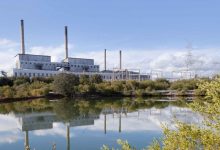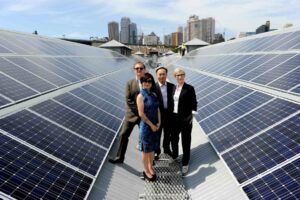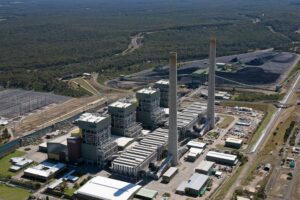A Western Australia government-owned coal fired power station that is slated to be retired in 2027 has shut down for a three-month period, due to coal shortages and strong daytime supply from the state’s huge rooftop solar resource.
The Collie power station – which is managed by government-owned utility Synergy and supplies an average of roughly 7% of the electricity on the state’s main grid – will be shut until January.
The Australian Energy Market Operator’s data dashboard for the WA energy market, the WEM, lists the Synergy plant’s 318MW as a “forced outage,” dated from September 13 to January 01, 2023.

WA Today quotes that a Synergy spokesperson as saying the coal plant is temporarily offline due to an “unavoidable short-term interruption” in coal supply.
“Synergy is unable to disclose its current overall coal stockpile levels or speak to its contractual arrangements with coal suppliers as this information is commercially sensitive,” the spokesperson said.
“Synergy is confident it can assist AEMO in meeting generation demand over the summer period.”
Rooftop solar allows for stockpiling of coal
State energy minister Bill Johnston said on Monday afternoon at a press conference that the shut down of the plant was a precautionary measure during a period of low demand – thanks to strong contributions from renewables – to “stockpile” adequate supplies of coal for the peak summer months.
Johnston says wet weather and operational mishaps are contributing to limited availability of coal in Western Australia.
“The coal that would normally be burned in the coal-fired power station is not being burned… and therefore will be added to the stockpile,” Johnston told reporters.
He added Western Australia’s energy usage was currently running at about half of peak demand but would increase as warmer weather set in.
Johnston acknowledges the decision to suspend operations at Collie as unusual, given that under energy market rules “you’re not allowed to shut your generator off.”
But the minister says the pause in generation means that “coal that would ordinarily be burned in October, November and December is available to us in January and February.”
Johnston says the WA government has granted diversified mining and manufacturing company South32 access to the state’s port of Bunbury to import coal from Indonesia to run its Worsley alumina plant. In the past, South32 has sourced its coal domestically.
A period of transition
The Collie coal plant outage comes just a few months after Western Australia’s Labor government announced plans to close all state-owned coal generators by 2030 and accelerate the shift to renewables.
For the Collie power station, this locked in a 2027 closure date, while units at the 1,100MW Muja power station (pictured above) are slated to close progressively, with Muja D to close by 2029.
At the time, the McGowan government said it was committed to working with coal providers to ensure security of supply through to 2030, and an orderly transition for industry.
“As we all know, the coal industry is in a period of transition,” said Johnston in a brief emailed statement on Monday, ahead of a press conference.
“Commercial disputes are a matter for the parties, however the government wants to see solutions that ensure coal production continues over the coming years.
“Synergy continually assesses generation and fuel requirements and will take all necessary steps to ensure reliable power supply for WA’s main electricity network.”
The race to replace coal on the world’s biggest isolated grid
In June, Johnston unveiled the McGowan government’s plan to invest $3.8 billion in new renewable energy and storage projects needed to replace Muja and Collie.
The investment – which will be managed by Synergy – is expected to deliver upwards of 800MW of new wind generation capacity and more than 1,100MW of new energy storage capacity – the latter to consist mostly of big battery projects.
At that time, Johnston said the viability of the two coal fired power stations was becoming eroded by strong growth in renewables uptake, particularly in rooftop solar, and it not longer made sense to prop up the generators.
Just over a third of WA households – around 400,000 in total – currently have solar installed with a combined capacity of more than 1,350MW. The state government expects uptake will grow until 2030 and beyond, with more than half of all WA households set to feature rooftop solar by 2030.








